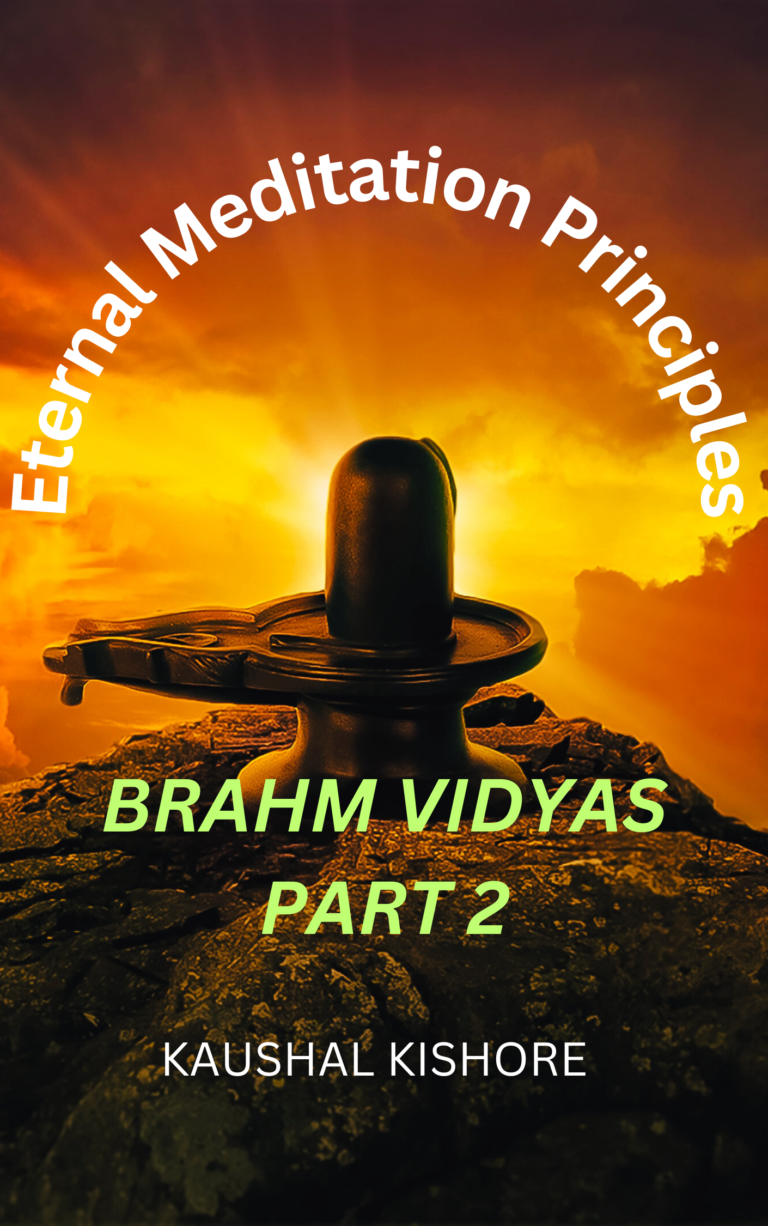
ETERNAL MEDITATION PRINCIPLES
After detailed discussion on the process and principles of meditation, and on eleven Brahm Vidyas in the first part of the series of books, the second part covers the explanation of Advait Vedanta as per Shankaracharya, answering the questions including
(a)Who is qualified for meditation,
(b) Which object to meditate on,
(c) What is aim of meditation
(d) Difference between Prayer of Nirguna and Saguna Brahm
The Author emphasises that physical and mental health are only additional benefits, or byproducts of meditation and the aim should be much higher. For this, we need to understand the original meditation systems explained in traditional gems of books, including Patanjali Yog Sutra, Vedas, and Upanishads.
Very few reach the Meditation stage and then goal of meditation, i.e., attaining the stage of super consciousness is forgotten.
The book explains the process in very simple way. The series of books also expounds the 34 Brahm Vidyas, wisdom extracted from major Upanishads. We find eleven such wisdom in first part of the book, ideal starting point for meditation.
In this second part, eleven more Brahm Vidyas are narrated in detail in Sanskrit original and English meaning. The book explains the benefit of Advaita Vedanta, and of Prayer through Brahm Vidya over conventional Prayer through Bhakti of individual God.
A very important aspect of Brahm Vidyas is that prayer with the help of Brahm Vidya does not require any intermediation between the devotee and God. No Priest, no following of specific rites are necesaary if you pray through continuous contemplation on one or other of attributes of eternal as per the Brahm Vidya.
Contents
DEDICATION ………………………………
ACKNOWLEDGMENTS ……………
PROLOGUE ………………………
CHAPTER 1
INTRODUCTION
CHAPTER 2
UPASANA
CHAPTER3
MAITREYI VIDYA
CHAPTER 4
SHANDILYA VIDYA
CHAPTER 5
VAISVANARA VIDYA
CHAPTER 6
PANCHAGNI VIDYA
CHAPTER 7
PARYANKA VIDYA
CHAPTER 8
SWETAKETU VIDYA
CHAPTER 9
PURUSHA VIDYA
CHAPTER 10
PRANA VIDYA
CHAPTER 11
ANTARADITYA VIDYA
CHAPTER 12
BHRIGU VARUNI VIDYA
CHAPTER 13
JYOTI SHAM JYOTI VIDYA
CHAPTER 14
SUMMARY AND WAY FORWARD
ABOUT THE AUTHOR .
